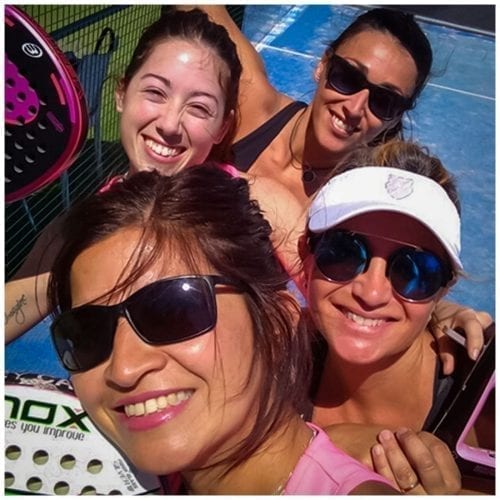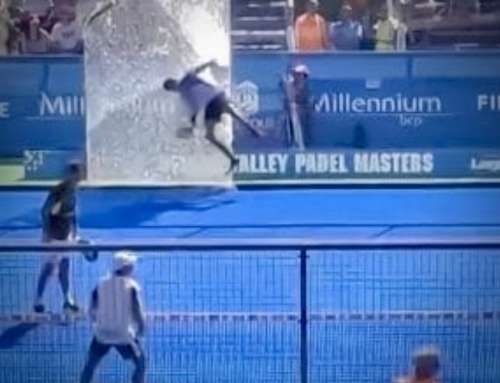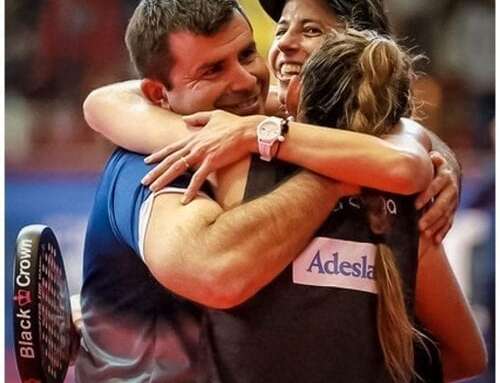
Padel rules and regulations by the (FIP) International Federation of Padel
International Padel Federation (FIP)
Padel Rules and Regulations – Summary
The International Federation of Padel (FIP) has developed a specific set of rules and regulations for the sport of Padel (Paddle). The following is a summary of the most important rules. The full details can be found on the official FIP website.
Beginning of the Game
PADEL RULE 1: Position of the Players
-
Padel is played in pairs, with each pair occupying one side of the court.
-
The server puts the ball into play, and the receiver returns it.
-
The receiver may stand anywhere on their side of the court, as may the receiver’s partner and the server’s partner.
-
Players change sides at the end of every odd-numbered game. If players fail to change sides, the error must be corrected immediately to restore the proper sequence of play.
-
Maximum rest time between games: 90 seconds.
PADEL RULE 2: Choice of Side and Service
-
The choice of side and the right to serve in the first game is decided by a draw. The winning pair may choose:
a) To serve or receive; the opposing pair then chooses their side.
b) A side of the court; the opposing pair then chooses to serve or receive.
c) To let the opponents choose first.
PADEL RULE 3: The Serve
-
The server must keep both feet behind the service line, between the central service line and the side wall.
-
The serve must be hit diagonally over the net into the opposite service box; the ball must bounce inside or on the lines of that box.
-
The first serve starts from the right-hand side, alternating sides thereafter.
-
Players must bounce the ball behind the service line. A disabled player with only one arm may use the racquet to bounce the ball.
-
The server must not touch the service line or enter the diagonal service box.
-
The ball must be struck at or below waist level; at least one foot must remain on the ground.
-
No walking, running, or jumping is allowed during the serve. Small movements that do not alter stance are permitted.
-
If the server misses the ball, the serve counts as taken.
-
If the serve is taken from the wrong side, the error must be corrected immediately. All points played remain valid; a single service fault prior to discovery still counts.
PADEL RULE 4: Service Fault
A service fault occurs if:
a) The server violates Rule 3.
b) The server completely misses the ball.
c) The ball bounces outside the receiver’s service box.
d) The ball hits the server’s partner after the serve.
e) The ball touches the fence marking the opponents’ boundary before the second bounce.
f) The ball hits any wall within the server’s service box, even if it subsequently crosses the net.
g) The ball takes an irregular bounce and cannot be hit.
h) The server takes more than 25 seconds to serve.
PADEL RULE 5: Service Order
-
The serving pair decides which partner serves first; service alternates between pairs throughout the set.
-
The service order cannot change during a set, but may change at the start of the next set.
-
If a player serves out of turn, the correct player serves immediately after discovery. Points played remain valid.
PADEL RULE 6: Service Returns
a) The receiver must allow the ball to bounce once before hitting it; it must be struck before the second bounce.
b) If the ball bounces twice, even after hitting a back wall, the serve is valid; point goes to the server.
-
In courts with “edges,” the serve is valid only if the ball strikes the corner and continues toward the receiver.
c) If the receiver hits the ball before it bounces or if the serve is a fault, the receiver loses the point.
PADEL RULE 7: Return Order
-
The receiving pair decides who returns the first serve in the set.
-
Players must alternate receiving the serve; this order cannot change during the set.
-
If the order is altered during a game, play continues incorrectly until the end of the game. Subsequent games revert to the correct order.
-
If the wrong player returns a serve, the receiving pair loses the point.
PADEL RULE 8: Number of Serves
-
The server is allowed a second serve if the first is invalid, served from the same side immediately after the first.
PADEL RULE 9: Preparation of the Server
-
The server must wait until the receiver is ready. If the receiver is not ready, the server cannot claim the point.
-
The receiver cannot claim the point if the serve is out.
-
The 25-second rule must still be observed.
PADEL RULE 10: Serve Touched by Player
-
If the receiver or their partner hits the served ball before it bounces, the point is awarded to the server.
PADEL RULE 11: Repetition of a Point (Let Ball)
-
A “let” is called if:
a) The ball touches the net or posts and lands in the receiver’s service area, without touching the fence before the second bounce.
b) The ball touches the net or posts and strikes a player or part of their body.
c) The receiver is not ready. -
First serve let: serve is replayed.
-
Second serve let: only one additional serve is allowed.
-
A point may also be replayed if the ball splits or breaks, or play is interrupted by unforeseen circumstances.
PADEL RULE 12: Interference
-
If a player is disturbed by factors beyond their control (excluding court fixtures or their partner), a “let” is called.
-
Deliberate interference: point awarded to the opponent.
-
Accidental interference: “let” is called if the point is won by the player causing the disturbance.
During the Game
PADEL RULE 13: Scoring
-
Points: 0, 15, 30, 40. Four points normally wins the game.
-
Deuce (40-all): next point is “advantage.” Winning the next point after advantage wins the game; losing it returns to deuce.
-
Sets: first to 6 games with a minimum 2-game advantage.
-
5-all: continue until one team wins 7-5.
-
6-6: team with 2-game advantage wins unless a tiebreak is agreed (Rule 14).
-
Best-of-3 or 5 sets.
-
In best-of-5: optional 10-minute rest after 3rd set.
PADEL RULE 14: Tie-Break
-
Played at 6-6 if agreed.
-
First to 7 points with 2-point advantage wins.
-
Service alternates every two points after the first serve.
-
Players change sides every 6 points; 25 seconds to change sides.
-
Winner of tiebreak wins set 7-6.
-
Next set starts with pair who did not serve first in the tiebreak.
PADEL RULE 15: Ball in Play
-
Ball is hit alternately by each player.
-
Ball is in play from the serve until the point ends:
-
Touches opponents’ walls or fence,
-
Bounces twice, or
-
Bounces correctly and crosses boundaries, bouncing a second time.
-
-
Players may hit the ball out of court above upper limits if conditions are met (two central entrances, dimensions, free space).
-
Ball returning from objects outside the court counts for the player who hit it.
-
Ball hitting holes/flaws in fencing also awards point to the hitting player.
-
Players may hit off their own walls except on serve.
-
Ball bouncing in the corner of the “U” wall is valid (“egg”).
PADEL RULE 16: Volley
-
Any player may volley except on serve.
PADEL RULE 17: Ball Bouncing on Installations
-
Ball remains in play if it bounces off installations after bouncing in court.
-
Ball hitting lights or roof (covered court) ends point.
PADEL RULE 18: Correct Return of a Ball
-
Valid if:
a) Ball touches net/posts and bounces in opponents’ court.
b) Ball returns to player’s court after wall bounce and is struck without touching net/posts/opponents’ court.
c) Ball bounces in opponents’ court and leaves limits or hits roof/lights/other objects outside court.
d) Ball hits any object in opponents’ court: point to hitter.
e) Ball bounces and touches metal fence or walls: opponent must return before second bounce.
f) Scooped/pushed shots are valid if struck once in a continuous movement.
PADEL RULE 19: Lost Point
-
Point lost if:
a) Player, racquet, or belongings touch net/posts/middle post or opponents’ court/fence.
b) Ball bounces twice.
c) Ball volleyed before net.
d) Ball hits opponents’ walls, fence, or outside objects directly.
e) Ball hits net/posts and does not land in opponents’ court.
f) Double hit.
g) Ball hits player or belongings (except racquet).
h) Ball hits own court fence.
i) Ball touched with anything other than racquet.
j) Player jumps over net.
k) Both players hit ball consecutively/simultaneously. -
Note: Not a double hit if only one player makes contact or strikes partner’s racquet.
PADEL RULE 20: Temporary Rule
-
On courts with gaps between net posts and fencing, ball is valid only if judged higher than net.
PADEL RULE 21: Continuous Play
-
Play is continuous except:
a) Permitted rest periods (Rule 1).
b) Changing sides (Rule 1).
c) Best-of-5 matches: 10-minute rest (Rule 13). -
Matches cannot be delayed for recovery or advice outside permitted times.
-
Suspension due to uncontrollable factors:
-
≤5 min: no warm-up
-
6–20 min: 3 min warm-up
-
≥21 min: 5 min warm-up
-
-
Match resumes at same score, server, and player positions.
-
Suspended for lack of light: pause when total games even; sides remain same.
PADEL RULE 22: Ball Changes
-
Balls changed during third set in final rounds (except semifinals/finals).
-
Semifinals/finals: first change after 11 games, subsequent every 13 games.
-
Three balls may not be changed unless rules/umpire permits.
-
Missed ball change corrected when next scheduled server serves.
-
Lost ball: replaced with equivalent; if not possible, all balls replaced.
Etiquette and Behavior
Punctuality
-
Matches start at scheduled times. Players must be ready.
-
Players absent 10 minutes after start: opposing pair wins.
Clothing
-
Players must wear clean, appropriate attire; sleeveless tops/swimwear prohibited.
-
Teams recommended to wear matching clothes (optional).
Identity
-
Players must verify identity, nationality, age, and other competition-related details upon umpire request.
Behavior and Discipline
-
Players must act courteously and respectfully.
-
Players cannot leave the playing area without umpire permission, except when changing sides.
-
Advice/instructions may be received from captain or coach during match.
-
Finalists must attend prize-giving unless prevented by injury or valid reason.
Time Rules
-
25 seconds between points; 90 seconds for side changes.
-
Warm-up time: 5 minutes.
-
Injury stoppage: 3 minutes attention/recuperation.
Obscenity, Ball, and Racquet Abuse
-
Audible/visible obscenities are prohibited.
-
Ball abuse: violently hitting ball when not in play is prohibited.
-
Racquet abuse: throwing or striking racquet violently prohibited.
-
Verbal/physical aggression or unsportsmanlike behavior toward umpire, opponents, spectators, or others prohibited.
-
Violations are penalized by the head umpire. Incidents are recorded for review by the FIP Disciplinary Committee.




